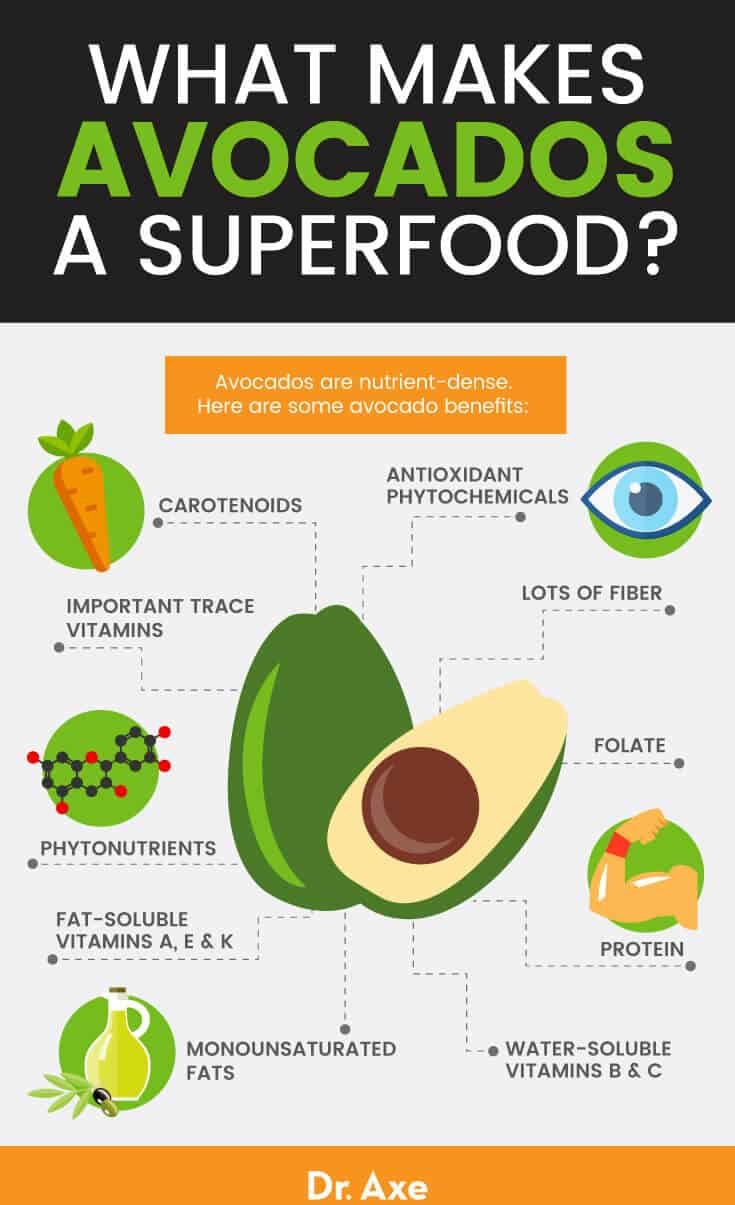Spice Up Your Health: 5 Simple Ways to Use Nutmeg Daily
The scent of nutmeg is, for many, a whisper of holidays, a hint of comforting desserts, or a nostalgic echo of childhood kitchens. It’s the silent protagonist in a symphony of flavors, often overlooked in its supporting role. Yet, this humble, unassuming spice, derived from the seed of the Myristica fragrans tree, holds a lineage far richer and more profound than its modern culinary reputation suggests. It is a spice steeped in ancient wisdom, a commodity that fueled wars and expeditions, and a medicinal powerhouse whose secrets are increasingly being unveiled by contemporary science.
Our journey with nutmeg begins not just in the kitchen, but in the annals of history, traversing continents and centuries. From the Banda Islands, its tiny, remote birthplace in Indonesia, to the spice routes that snaked across oceans, nutmeg was once as valuable as gold, its allure driving empires and sparking fierce rivalries. It was treasured not merely for its intoxicating aroma and warm, woody, slightly sweet, and peppery flavor, but for a profound array of perceived health benefits – from digestive aid and sleep promoter to a cure-all for various ailments.
Today, as we navigate a world increasingly focused on holistic well-being and natural remedies, the spotlight is once again turning to these ancient botanicals. Nutmeg, with its complex profile of volatile oils, minerals, and compounds, stands ready for a reintroduction, not as a mere garnish, but as a potent ally in our daily pursuit of health. This article aims to tell the story of nutmeg’s resurgence, delving into its remarkable health benefits and, crucially, offering five simple, accessible, and delicious ways to weave its magic into your everyday routine, transforming it from an occasional indulgence into a consistent pillar of your wellness regimen. Prepare to discover how a pinch of this ancient spice can truly "spice up your health."
>
The Mystique of Myristica fragrans: A Historical and Botanical Odyssey
To truly appreciate nutmeg, one must first understand its origins and the journey it undertook to grace our spice racks. Myristica fragrans is an evergreen tree native to the Moluccas (Spice Islands) of Indonesia, specifically the Banda Islands. It produces two distinct spices: nutmeg, which is the seed, and mace, the lacy aril that surrounds the seed. Both boast unique flavor profiles and medicinal properties, though nutmeg typically receives more attention.
For centuries, the Banda Islands were the sole source of nutmeg, making it one of the most coveted and expensive spices in the world. Arab traders monopolized the trade for centuries, carefully guarding the secret of its origin. When Europeans finally discovered the source in the 16th century, it ignited a brutal struggle for control. The Dutch East India Company eventually gained dominance, going to extreme lengths, including massacres and enslavement, to maintain their monopoly. The value of nutmeg was so immense that, in 1667, the Dutch famously traded the island of Run (a nutmeg-producing island) to the English in exchange for Manhattan Island – a testament to its economic power.
Beyond its economic and geopolitical significance, nutmeg was revered in traditional medicine across diverse cultures. In Ayurvedic medicine, it was used to improve digestion, treat insomnia, and enhance brain function. Traditional Chinese Medicine (TCM) utilized it to warm the spleen and stomach, alleviate diarrhea, and invigorate the kidneys. European apothecaries prescribed it for everything from plague prevention to digestive complaints and as a sedative. These historical applications, born from empirical observation over millennia, provide a fascinating backdrop to the modern scientific inquiry into nutmeg’s efficacy.
The Chemical Symphony: What Makes Nutmeg So Potent?
The power of nutmeg lies in its intricate chemical composition. It is a treasure trove of volatile oils, including myristicin, elemicin, safrole, and sabinene, alongside a host of lignans, neolignans, terpenes, and other phenolic compounds. These bioactive molecules work synergistically to bestow nutmeg with its wide spectrum of therapeutic effects.
- Myristicin and Elemicin: These phenylpropene derivatives are particularly noteworthy. While responsible for the psychoactive effects associated with very large, toxic doses of nutmeg, in small, culinary amounts, they are believed to contribute to its neuroprotective, anti-inflammatory, and sedative properties.
- Terpenes (e.g., Pinene, Camphene, Limonene): These compounds are common in many essential oils and contribute to nutmeg’s distinctive aroma, as well as its antioxidant and anti-inflammatory actions.
- Lignans and Neolignans: These plant compounds possess significant antioxidant, anti-inflammatory, and potential anticancer properties, contributing to nutmeg’s overall health-promoting profile.
- Minerals and Vitamins: Nutmeg also contains trace amounts of essential minerals like manganese, copper, potassium, and magnesium, along with B vitamins, which play crucial roles in various bodily functions.
It is this complex interplay of compounds that gives nutmeg its multifaceted therapeutic potential, bridging the gap between ancient folklore and contemporary understanding.
>
The Science-Backed Symphony of Benefits: Unveiling Nutmeg’s Powers
The ancient wisdom surrounding nutmeg is increasingly being validated by modern scientific research. While much of the research is still in its early stages (often involving in-vitro studies or animal models), the findings are compelling and shed light on why this spice has been cherished for so long.
-
A Potent Anti-inflammatory Agent: Chronic inflammation is a root cause of many modern diseases, from heart disease to autoimmune disorders and certain cancers. Nutmeg’s rich concentration of anti-inflammatory compounds, including terpenes and lignans, can help mitigate inflammatory responses in the body. Studies suggest that its extracts can inhibit pro-inflammatory enzymes and signaling pathways, offering a natural approach to reducing systemic inflammation. This makes it potentially beneficial for conditions like arthritis, muscle pain, and inflammatory bowel disease.
-
An Antioxidant Powerhouse: Our bodies are constantly bombarded by free radicals, unstable molecules that cause oxidative stress and cellular damage, leading to aging and disease. Nutmeg is replete with antioxidants that scavenge these free radicals, protecting cells from harm. Its phenolic compounds, in particular, exhibit strong antioxidant activity, helping to fortify the body’s defenses against environmental stressors and internal metabolic processes.
-
Digestive Dynamo: Traditionally, nutmeg has been a go-to remedy for digestive complaints. Its carminative properties, primarily attributed to its volatile oils, help relax the smooth muscles of the digestive tract, alleviating gas, bloating, and indigestion. It can stimulate the secretion of digestive enzymes, promoting more efficient breakdown and absorption of nutrients. For those suffering from sluggish digestion or occasional stomach discomfort, a small amount of nutmeg can act as a gentle, effective aid.
-
The Elixir of Tranquility: Sleep and Stress Reduction: Perhaps one of nutmeg’s most celebrated traditional uses is as a sleep aid and stress reliever. The myristicin and elemicin present in nutmeg, in very small doses, are thought to have mild sedative and anxiolytic (anxiety-reducing) effects. They may influence neurotransmitters, promoting relaxation and preparing the body for sleep. This is why a warm glass of milk with a pinch of nutmeg has been a time-honored bedtime ritual in many cultures. It doesn’t induce heavy sedation but rather a gentle calming effect, ideal for winding down after a stressful day.
-
Cognitive Enhancement and Neuroprotection: Emerging research suggests nutmeg may offer benefits for brain health. Its compounds exhibit neuroprotective properties, potentially safeguarding brain cells from damage. Some studies indicate that nutmeg may enhance memory and concentration by inhibiting enzymes like acetylcholinesterase, which breaks down acetylcholine, a neurotransmitter crucial for learning and memory. This makes nutmeg a fascinating subject for future research into age-related cognitive decline and neurodegenerative diseases.
-
Pain Relief (Analgesic Properties): In traditional medicine, nutmeg was often applied topically or ingested for pain relief, particularly for muscle aches, joint pain, and headaches. Its anti-inflammatory compounds likely contribute to this analgesic effect by reducing the underlying inflammation that often causes pain. While not a substitute for conventional pain medication, it can be a complementary natural approach for mild to moderate discomfort.
-
Detoxification Support: The liver is our body’s primary detoxification organ. Some research suggests that nutmeg extracts may support liver health by protecting it from damage and aiding in the detoxification processes. While more human studies are needed, this traditional use hints at a potential role in maintaining overall metabolic health.
-
Skin Health Ally: Applied topically, nutmeg has been used in various traditional remedies for skin conditions. Its anti-inflammatory and antimicrobial properties can be beneficial for reducing acne, soothing irritated skin, and promoting a clearer complexion. The gentle abrasive quality of finely ground nutmeg can also act as a mild exfoliant.
-
Oral Health Benefits: Due to its antimicrobial properties, nutmeg has found its way into some traditional oral hygiene practices. It can help combat bacteria responsible for bad breath and may contribute to reducing inflammation in the gums, supporting overall oral health.
It’s crucial to reiterate that while these benefits are promising, moderation is key. The potent compounds in nutmeg demand respect. In small, culinary doses, it’s a beneficial spice; in large, excessive quantities, it can be toxic.
>
The Art of Integration: 5 Simple Ways to Use Nutmeg Daily
Now that we’ve explored the rich history and compelling science behind nutmeg, let’s turn our attention to the practical. Integrating this powerful spice into your daily life doesn’t require elaborate recipes or significant time commitments. It’s about small, consistent additions that accumulate into meaningful health benefits and an enriched sensory experience. Here are five simple, yet profoundly effective, ways to make nutmeg a daily companion.
1. The Morning Ritual: A Zesty and Focused Start
Kickstarting your day with nutmeg can set a positive tone for both your physical and mental well-being. Its subtle stimulating and digestive properties make it an excellent addition to your breakfast routine.
-
In Your Coffee or Tea: Forget the sugary syrups; a tiny pinch of freshly grated nutmeg can transform your morning brew. For coffee, it adds a warm, spicy depth that complements the bitterness, enhancing its aromatic complexity. For tea, especially black tea or chai, it harmonizes beautifully with other spices. The myristicin in nutmeg, in these small amounts, is believed to offer a subtle cognitive lift, potentially enhancing focus without the jitters often associated with excessive caffeine. Moreover, for those who find coffee a bit harsh on the stomach, nutmeg’s digestive aid properties can offer a soothing counterpoint, helping to mitigate potential acidity.
- How to: Brew your coffee or tea as usual. Just before drinking, grate a whisper of nutmeg (no more than 1/8th of a teaspoon) directly into your mug. Stir well.
- Beyond the Brew: Experiment with adding it to your morning hot cocoa or a turmeric latte for an extra layer of warmth and benefit.
-
Elevating Your Breakfast Bowl: Whether you’re a fan of oatmeal, yogurt, or a morning smoothie, nutmeg can elevate both flavor and function.
- Oatmeal/Porridge: A dash of nutmeg, perhaps with a sprinkle of cinnamon and a few berries, transforms plain oatmeal into a comforting, nutrient-dense meal. It aids digestion, helps stabilize blood sugar, and provides sustained energy for the day ahead. The warmth of nutmeg pairs perfectly with the creamy texture of oats, creating a truly satisfying start.
- Yogurt Parfait: Layering Greek yogurt with granola, fruit, and a light dusting of nutmeg adds an unexpected warmth and sophisticated flavor profile. It also supports gut health, combining probiotics from the yogurt with nutmeg’s digestive benefits.
- Smoothies: While not an obvious choice, nutmeg can surprisingly enhance many smoothie recipes, especially those featuring banana, spinach, or plant-based milks. It cuts through overly sweet flavors and adds a grounding, earthy note. Pair it with ingredients like ginger or turmeric for an anti-inflammatory powerhouse blend.
2. Culinary Craft: Beyond the Dessert Cart
One of the biggest misconceptions about nutmeg is that its place is solely in sweet dishes. While it undeniably shines in pies, custards, and cookies, its true versatility comes alive in savory cooking. Many global cuisines, particularly in Europe (think French béchamel sauce) and Asia, have long understood its power to deepen flavors and add complexity to main courses.
-
Soups, Stews, and Braises: Nutmeg is a secret weapon for enriching the savory depth of slow-cooked dishes. It pairs exceptionally well with creamy soups (like potato leek, butternut squash, or mushroom), adding a warm, earthy counterpoint that prevents them from being bland. In hearty stews and braises, especially those with root vegetables or red meats, it melds with other spices to create a complex, umami-rich flavor profile. It subtly enhances the natural sweetness of vegetables and the richness of meats without overpowering them.
- How to: Add 1/4 to 1/2 teaspoon of freshly grated nutmeg during the simmering stage, allowing its flavors to infuse slowly. Taste and adjust.
-
Vegetable Dishes: Roasted or sautéed vegetables take on a new dimension with a hint of nutmeg. It’s particularly harmonious with brassicas like cauliflower, broccoli, and Brussels sprouts, as well as root vegetables such as carrots, sweet potatoes, and parsnips. It can temper any bitterness and bring out their inherent sweetness. Even a simple side of sautéed greens, like spinach or kale, can be elevated with a whisper of this spice.
- How to: Toss vegetables with olive oil, salt, pepper, and a pinch of nutmeg before roasting. Or, sprinkle it into your pan while sautéing greens towards the end of cooking.
-
Creamy Sauces and Mashed Dishes: This is where nutmeg truly asserts its savory prowess. It is an indispensable ingredient in classic béchamel sauce, the foundation for dishes like lasagna and gratins. It cuts through the richness of dairy, adding a sophisticated warmth and preventing the sauce from tasting flat. Similarly, a touch of nutmeg in mashed potatoes, mashed cauliflower, or even a creamy polenta adds a layer of unexpected elegance and depth.
- How to: When making a white sauce, add 1/4 teaspoon of nutmeg along with other seasonings. For mashed dishes, incorporate it while mashing, along with butter and milk, to ensure even distribution.
3. The Evening Elixir: A Pathway to Tranquility
As the day winds down, nutmeg can transition from a culinary enhancer to a soothing agent, preparing your mind and body for restful sleep. Its mild sedative properties, when consumed in small doses, can be a gentle aid for relaxation.
-
Warm Nutmeg Milk (Moon Milk): This is perhaps the most famous traditional use of nutmeg for well-being. A warm glass of milk (dairy or plant-based) infused with nutmeg is a time-honored bedtime ritual known for its calming effects. The warmth of the milk itself is comforting, and when combined with nutmeg’s ability to promote relaxation, it creates a powerful sleep-inducing elixir.
- How to: Gently heat 1 cup of milk (almond, oat, or cow’s milk) in a saucepan. Add 1/8 to 1/4 teaspoon of freshly grated nutmeg. You can also add a touch of honey or maple syrup for sweetness, and a pinch of cinnamon or cardamom for extra flavor and warmth. Sip slowly 30-60 minutes before bedtime.
- The Ritual: Make this a mindful practice. Dim the lights, put away screens, and savor the warmth and aroma. This ritualistic approach further enhances the relaxation response.
-
Herbal Tea Infusions: While warm milk is classic, nutmeg can also be a wonderful addition to certain herbal teas designed for relaxation. It pairs beautifully with chamomile, lavender, or valerian root teas, enhancing their calming effects without overpowering their delicate flavors.
- How to: Brew your favorite calming herbal tea. After steeping, add a tiny pinch (less than 1/8 teaspoon) of freshly grated nutmeg to your cup.
4. Topical Applications: Skin’s Silent Ally
Beyond ingestion, nutmeg offers remarkable benefits when applied topically. Its anti-inflammatory, antimicrobial, and antioxidant properties make it a valuable ingredient in natural skincare remedies. Always perform a patch test on a small area of skin before applying widely, as some individuals may be sensitive.
-
Acne-Fighting Face Masks: Nutmeg’s antimicrobial nature can help combat the bacteria that contribute to acne, while its anti-inflammatory compounds can reduce redness and swelling. The fine granules also offer gentle exfoliation, helping to unclog pores.
- How to: Mix 1 teaspoon of finely ground nutmeg powder with 1 teaspoon of raw honey (which is also antibacterial and moisturizing) and a few drops of milk or rose water to form a paste. Apply to clean skin, focusing on troubled areas. Leave on for 10-15 minutes, then rinse gently with warm water. Use 1-2 times a week.
- Spot Treatment: For individual blemishes, a tiny dab of this paste can be applied directly to the spot and left overnight (if skin tolerates it) to reduce inflammation.
-
Soothing Massage Oil: Nutmeg essential oil (diluted) or a very fine powder infused into a carrier oil can be used for massage to relieve muscle aches and joint pain, thanks to its analgesic and anti-inflammatory properties. The warmth of the spice can also promote circulation and relaxation.
- How to: Mix 1/2 teaspoon of finely ground nutmeg powder with 2 tablespoons of a carrier oil like almond oil, jojoba oil, or coconut oil. Gently warm the mixture slightly (do not boil). Massage into sore muscles or joints. For essential oil, use 2-3 drops of nutmeg essential oil per tablespoon of carrier oil.
- Caution: Nutmeg essential oil is potent. Always dilute it properly and avoid using it on broken skin. Avoid direct sunlight after application, as some compounds can increase photosensitivity.
-
Exfoliating Body Scrub: Combine nutmeg with other natural exfoliants for a stimulating and skin-softening body scrub.
- How to: Mix 2 tablespoons of finely ground nutmeg with 1/2 cup of granulated sugar, 1/4 cup of coconut oil, and a few drops of a calming essential oil like lavender. Gently massage onto damp skin in circular motions, then rinse thoroughly.
5. Aromatic Sanctuary: Inhaling Wellness
The power of scent is undeniable. Aromatherapy harnesses the therapeutic properties of essential oils to influence mood, alleviate stress, and even support physical health. Nutmeg, with its distinctive and comforting aroma, is a wonderful candidate for creating an aromatic sanctuary.
-
Diffusing Nutmeg Essential Oil: Nutmeg essential oil, extracted through steam distillation of the ground seeds, carries the concentrated aromatic compounds. Diffusing it can create an atmosphere of calm and mental clarity. Its warm, spicy scent is grounding and can help reduce feelings of anxiety, promote focus, and even act as a natural air freshener.
- How to: Add 3-5 drops of high-quality nutmeg essential oil to your ultrasonic diffuser. Combine it with complementary essential oils like frankincense, cedarwood, orange, or cinnamon for a richer, more complex aroma that enhances relaxation or invigoration, depending on the blend.
- Benefits: Inhaling nutmeg’s aroma can help clear the mind, reduce nervous tension, and provide a sense of comfort.
-
Homemade Potpourri and Sachets: For a more subtle, passive diffusion of nutmeg’s scent, incorporate whole or coarsely ground nutmeg into homemade potpourri or fabric sachets. These can be placed in drawers, closets, or living spaces to impart a natural, long-lasting fragrance.
- How to: Combine whole nutmegs, dried orange peels, cinnamon sticks, cloves, and star anise in a decorative bowl or fabric sachet. The scent will gently release over time, offering a continuous aromatic experience.
-
Steam Inhalation (with caution): For respiratory benefits, particularly during cold or flu season, a very mild steam inhalation with nutmeg can be helpful. The volatile compounds can help clear nasal passages and soothe irritation.
- How to: Bring a pot of water to a boil, then remove it from the heat. Add a tiny pinch (less than 1/8 teaspoon) of finely ground nutmeg or 1-2 drops of diluted nutmeg essential oil to the hot water. Drape a towel over your head, creating a tent, and carefully inhale the steam for 5-10 minutes. Keep your eyes closed.
- Caution: Do not use too much nutmeg, as the vapors can be irritating. Always maintain a safe distance from the hot water.
>
Important Considerations and Cautions: Respecting Nutmeg’s Potency
While nutmeg offers a plethora of health benefits, it is crucial to approach its use with respect and awareness of its potency. Like many powerful botanicals, the line between therapeutic and toxic is dosage-dependent.
- Moderation is Key: The most critical advice regarding nutmeg is to use it in small, culinary amounts. The daily recommendations for adults typically range from 1/8 to 1/4 teaspoon (0.5 to 1 gram). At these levels, nutmeg is generally safe and beneficial.
- Toxicity in Large Doses: Nutmeg contains myristicin, a psychoactive compound. In very large doses (typically 2 teaspoons or more, but individual sensitivity varies greatly), myristicin can induce symptoms of "nutmeg poisoning," which include nausea, vomiting, dizziness, dry mouth, rapid heartbeat, severe hallucinations, confusion, and even convulsions. These effects can last for several hours to a few days and require medical attention. It is not a safe recreational drug.
- Pregnancy and Lactation: Due to insufficient research and the presence of potentially uterotonic compounds, pregnant and breastfeeding women should avoid consuming nutmeg in medicinal or larger-than-culinary amounts. Small amounts used for flavoring food are generally considered safe, but consultation with a healthcare provider is always recommended.
- Drug Interactions: Nutmeg can interact with certain medications, particularly antidepressants (due to potential serotonin effects) and anticoagulants (blood thinners) if consumed in large quantities. If you are on medication, especially for chronic conditions, consult your doctor before significantly increasing your nutmeg intake.
- Liver Health: While some studies suggest nutmeg may support liver detoxification, very high doses over time could potentially stress the liver due to the metabolism of its active compounds. Again, moderation is paramount.
- Quality Matters: Opt for whole nutmegs and grate them fresh as needed. Pre-ground nutmeg loses its potency and aroma more quickly, and can sometimes be adulterated. Freshly grated nutmeg ensures maximum flavor and therapeutic benefit. Look for organic, sustainably sourced options.
>
The Ritual of Grinding: A Mindful Connection
In an age of instant gratification, the act of freshly grating nutmeg offers a beautiful opportunity for mindfulness and connection with your food. Holding a whole nutmeg, feeling its hard, woody surface, and then running it across a microplane or fine grater, releases an explosion of aromatic compounds that far surpasses any pre-ground variety.
This simple act transforms a mundane task into a sensory ritual. The rich, warm scent that fills the air is an immediate invitation to slow down, to appreciate the source of your ingredients, and to infuse your culinary creations with intention. It ensures that you are receiving the freshest, most potent compounds, maximizing both flavor and health benefits. Invest in a few whole nutmegs and a good microplane; the difference in experience and efficacy is profound.
>
Conclusion: Embracing the Ancient Spice for Modern Wellness
Nutmeg, with its storied past and complex chemical symphony, is far more than just a seasonal spice. It is a testament to the enduring power of nature, a bridge between ancient wisdom and contemporary scientific understanding. From its humble origins in the distant Banda Islands to its revered status in traditional medicine, this remarkable seed has quietly offered its gifts of flavor, aroma, and healing for centuries.
By integrating just a small, mindful amount of nutmeg into your daily routine – whether through your morning coffee, a savory dinner, a calming evening drink, a rejuvenating face mask, or a fragrant diffused aroma – you are not merely adding a spice. You are embracing a holistic approach to well-being, leveraging its anti-inflammatory, antioxidant, digestive, cognitive, and calming properties. You are participating in a timeless ritual, connecting with a botanical ally that can gently, yet profoundly, "spice up your health" in myriad ways.
As you embark on this journey of rediscovery, remember the golden rule: moderation. Respect the potency of nutmeg, savor its nuanced flavors, and allow its ancient magic to infuse your modern life with warmth, vitality, and tranquility. Let the humble nutmeg be a daily reminder that sometimes, the most profound enhancements to our health come from the simplest, most natural sources, waiting patiently in our spice racks to be rediscovered.






